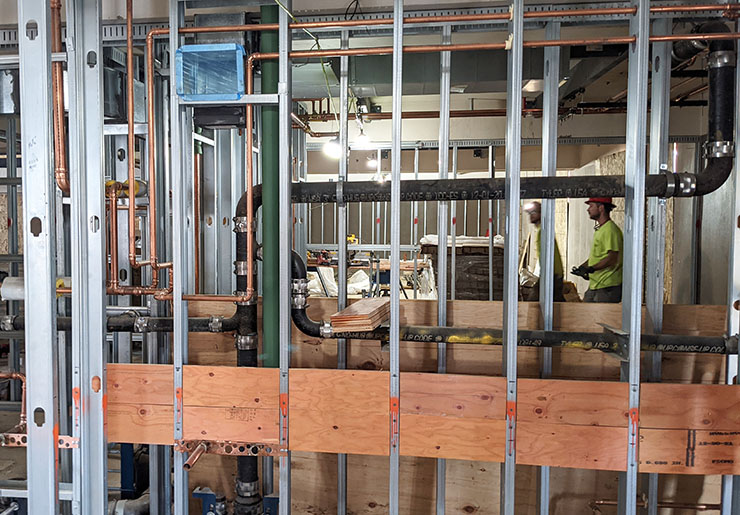Recycling and Repurposing Materials
Graham Construction finds new ways to repurpose and recycle existing materials while renovating 304 Iowa Avenue.
The net positive waste imperative of the Living Building Challenge underscores the value of diverting waste away from landfills during the construction and renovation of buildings. As of August 2022, 98 percent (or 1,264 tons of demolished materials) have been diverted from landfills. The general contractor for Stanley Center’s living building project, Graham Construction, shared some of their recent solutions to recycle and reduce waste:
- Insulation. We were removing existing insulation from the building and putting it into a dumpster to take to the landfill. Our goal is to send as little to the landfill as possible, calculated by tonnage. We saw that storms were rolling in and the superintendent gathered up tarps to cover the dumpster, saving us from having to take wet insulation to the landfill which weighs significantly more than dry insulation. Also, we had one contractor on site with a pole barn at home. When he heard that we needed to recycle insulation, he took some to be able to insulate part of his pole barn.
- Plaster and mesh. When the existing walls were demolished from the building, they were found to be made up of plaster and wire mesh. With each piece of wall that was removed, the contractor had to drive over the piece several times to separate the plaster from the mesh as each of those materials went to different recycling centers.
- Commercial glass. We called several glass recyclers and most didn’t want to recycle commercial glass because it is typically made up of materials that make it stronger to prevent breaking. We finally found one company that might be willing to take our material, but we had to do a FaceTime call with them and intentionally break a piece of glass to show them how it actually broke. Based on that visual information, they could discern that the glass was old enough that it didn’t contain any undesirable materials and they agreed to take it for recycling.
- Drywall. We are working on finding what to do with the extra pieces of drywall that will come out of the building as it is being installed in the next few months and how to recycle it. We have been calling around and asking our trade partners for ideas. Someone heard that the gypsum in drywall is often used as agricultural fertilizer. Everyone is currently looking for a farmer who would like to use our gypsum for his fields. The catch is that we’ll need to separate the gypsum from the paper exterior. Another option our contractor has thought of is leaving the extra pieces out for employees to use (for example, when finishing up their basements).
- Bricks. When the road was excavated, and the original brick roadway was exposed, the city wanted the bricks back. Those were all weighed and then taken to the city’s yard to be saved and used for another project.
- Flagpole, railings, and more. We recycled the flagpole to the local VFW Post, donated some of the bookcases to the local school, repurposed some of the built-in casework for the construction trailer, and sent the railings to the community college to be turned into a beautiful sculpture that will be brought back to the Stanley Center. An effort is also made to reduce extra waste from everyday items, such as when contractors are on site eating their lunch, packing their containers up, and taking them back home with them.

